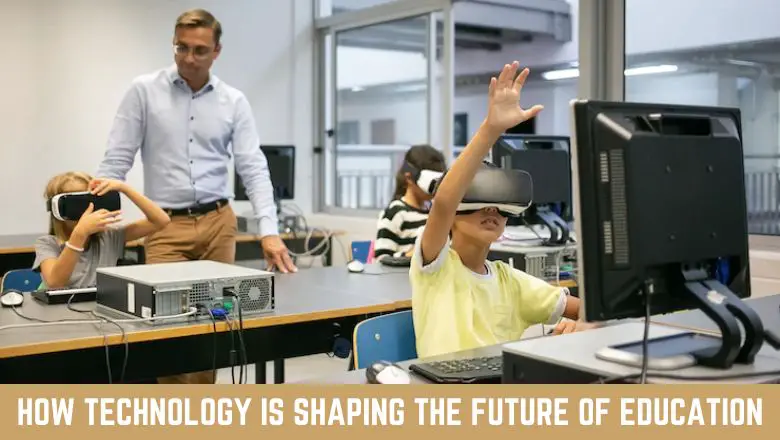Our lives have been transformed almost entirely by technology, so it seems like education systems around the world need an update.
Many educators are taking advantage of the digital revolution and embracing new technologies to utilize students’ full potential, but can they adapt quickly enough to prepare children for the new workforce? We will be talking about How Technology is Shaping the Future of Education.
The growing importance of technology in classrooms
A new infographic from Best Education Degrees explores the transformation classrooms are undergoing as a result of technology.

What the Next Generation will bring
Technology may seem pervasive to some, but younger generations feel it is constantly present.
One-third of online users are children and young adults, so it’s not surprising that they are more hyperconnected and technologically adept than their parents.
School and college administrators are faced with the challenge of addressing education to meet children’s changing educational needs while also preparing them for a more uncertain future of work. But what should be prioritized?
A new paradigm for teaching and learning in the 21st century
The majority of 1,400 teachers surveyed said they believe the classrooms of the future will emphasize self-paced and personalized learning.
With this student-centric approach, children would be in control of their pace and learning objectives since they would consider their interest to guide their pace. Various technologies such as artificial intelligence, chatbots, and video-based learning could facilitate their learning process.
Artificial Intelligence
Artificial intelligence in education usually focuses on identifying what a student already knows, then tailoring personalized curricula based on what they already know.
Throughout 2018 Duolingo, an AI-powered language learning platform has racked up more than 50 million downloads, making it one of the most popular education apps globally.
One study found that spending just 34 hours on the app is equivalent to an entire university semester of language education, challenging traditional notions of learning.
Although artificial intelligence in education is still in its infancy, Duolingo’s success demonstrates the sector’s potential for growth. In fact, AI in education is projected to hit $6 billion by 2025. The U.S. and China will make up the majority of this, with China leading the charge globally.
Chatbots
Next-generation education is also rapidly adopting chatbots. Chatbots simplify the interaction between the computer and student and provide a variety of advantages, including:
- Spaced interval learning: Optimizes memorization through algorithms and repetition.
- Faster feedback: Papers can be graded, and more accurately, in less time than if they were graded by teachers.
- Learning self-paced: Governed by a student’s performance and learning goals.
These technologies empower educators with new strategies to engage learners while reducing their workload.
Video Learning
98% of educators believe video-based learning is an important component of personalizing learning experiences, even if it may not necessarily be considered as innovative as artificial intelligence or chatbots.
Almost all institutions report using video in some way in their curriculums, but higher demand for video-based learning may be coming from students in the near future.
As a result, video education enhances student satisfaction by 91%, and student achievements by 82%, and this is why educators increasingly turn to video for things like:
- The provision of materials for student assignments
- The process of giving feedback to students
- Exercises for blended learning (flipping instruction)
Flipped classrooms replace traditional classrooms with online education that is sometimes done outside of class.
Traditionalists and Techies: A Battle for the Future
Recent years have seen a radical shift in how students absorb information with the trend of flipping classrooms. By enabling students to work collaboratively during class time, the relatively new model also eliminates homework.
The traditional educational model is disrupted by new models of learning, but is it possible that an increasing amount of time children spend watching screens is detrimental to their development?
There has also been an apparent increase in low-tech or tech-free schools that believe children are more likely to absorb information from books rather than screens.
Creating First-Class Humans
The benefits of technology as teaching tools are indisputable, although we are not quite at the age of the iTeacher just yet. Ultimately, however, students are kept at the center of education by providing them with psychological and developmental support.
“The future will be about using computer artificial intelligence along with the emotional, cognitive, and social abilities of humans so that we will educate first-class humans and not second-class robots.”
—OECD, Trends Shaping Education report
It is perhaps less important how children acquire these skills than their abilities to deal with change, for that is the only constant in life.
If you liked reading this article on How Technology is Shaping the Future of Education, share it with your social network.
Thank you!

